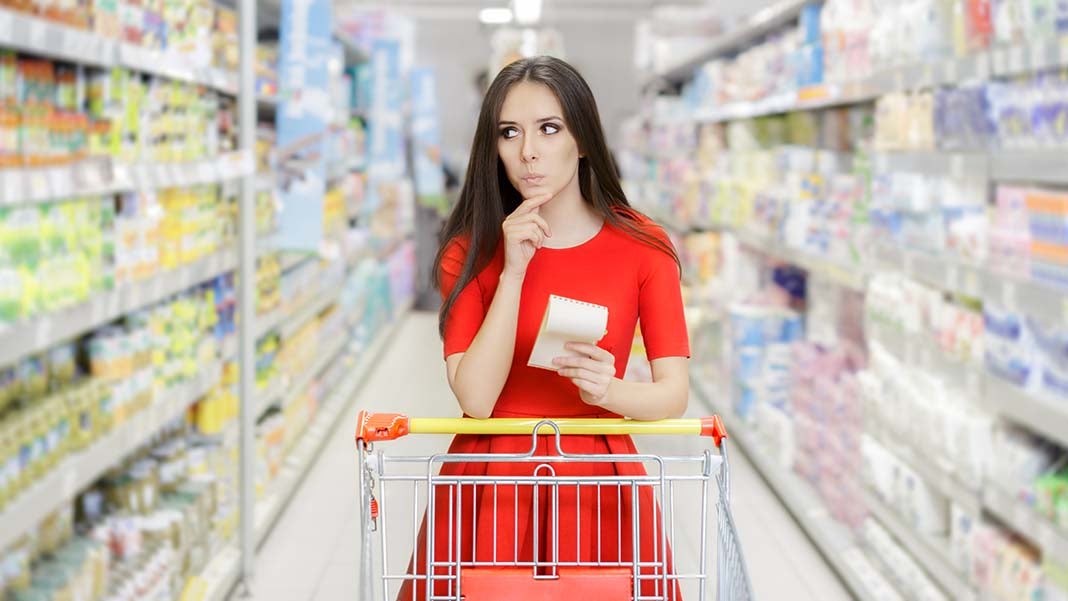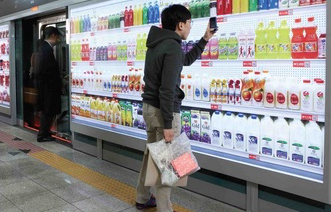
Twitter is adding buy buttons. Instagram is doing the same. Amazon offers same-day grocery delivery in several markets.
All of these are retail experiments to discover the ideal strategies that use technology to connect buyers to products in the systems that buyers find most convenient.
It’s a very creative area in retail and one where I’m certain we’ll see a lot of innovations in the coming years. I wanted to share one very creative and unusual approach that I recently found out about. It’s being done in South Korea. Check out the photo below:
Those may look like supermarket shelves, but they are really back-lit sheets of plastic printed with photos of food items.
These are being put up in subway stations. While commuters wait for their trains, they browse the supermarket shelves to find the items they want. Beside each item is a QR (quick response) code that shoppers capture on their cellphones. They browse the “aisles” of the virtual supermarket filling up their shopping carts. When done, they check out, and then board their train.
If their shopping is part of their morning commute, the food will be waiting for them at home when they get off work. If they shop during their evening commute, the food is delivered the next morning.
Related Article: The Evolution of Mobile Advertising
The company doing this, Tesco, was already in the business of delivering groceries to homes, so adding this feature just took some creative thinking at the beginning. Once the idea was worked out, they had a lot of the infrastructure already in place.
Remember when you learned about Venn diagrams in school? You drew two or more circles that represented the “universes” of different things and found the places where they overlapped. In the case of this new subway supermarket shopping strategy, you have a company that:
- Is good at delivering food to homes, and
- Has an Internet order-taking pipeline.
You have a universe of commuters who need food delivered to their homes. The quest is to find a way to get these two groups to overlap and that’s where the smart phone technology and plastic displays come in. The displays hook up with the smart phone technology and that creates a bridge between the commuters and the food store. Now the groups overlap.
Using this kind of thinking, what groups of prospects are you currently not able to reach? Do you need to be more creative in your advertising or your displays? Do you need to add another delivery system? Restaurants, for example, are beginning to use Uber and similar services for delivery.
Use technology and different advertising media to get your products in front of your prospects at times and places where they will consider making a purchase.
To get the full story on what Tesco is doing with these virtual stores, check out the company’s YouTube video.













